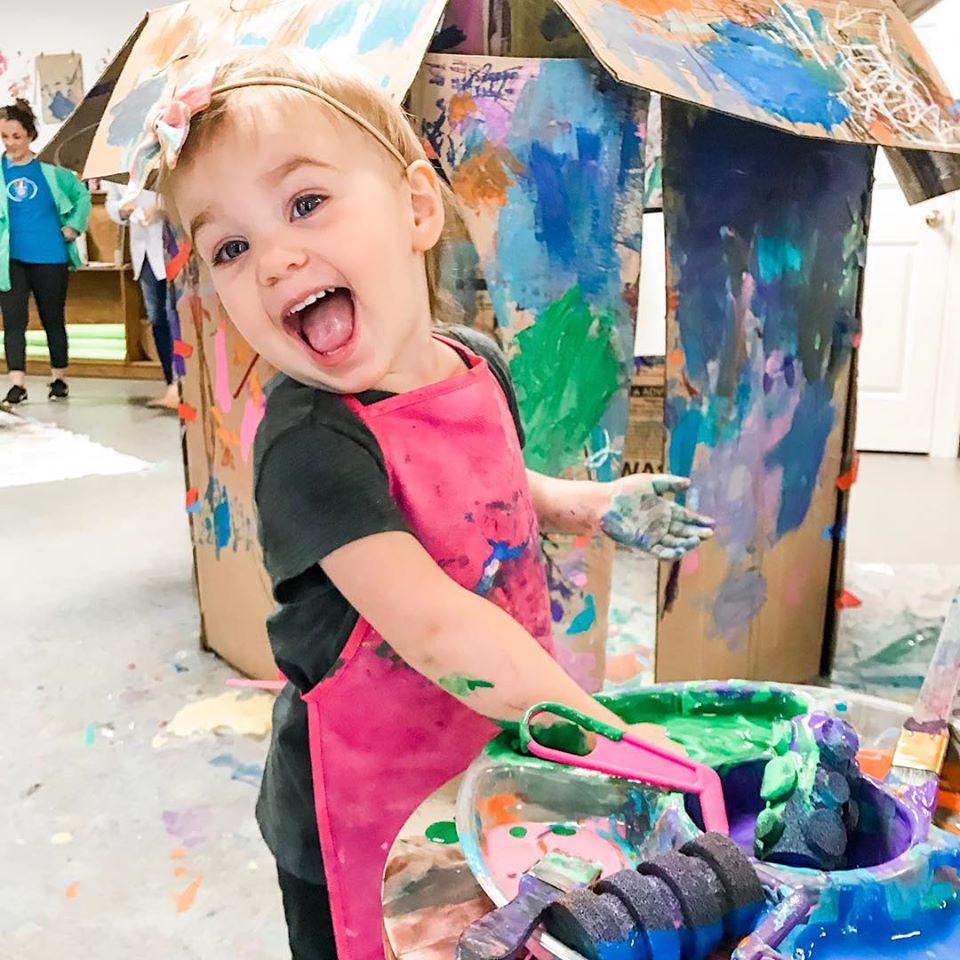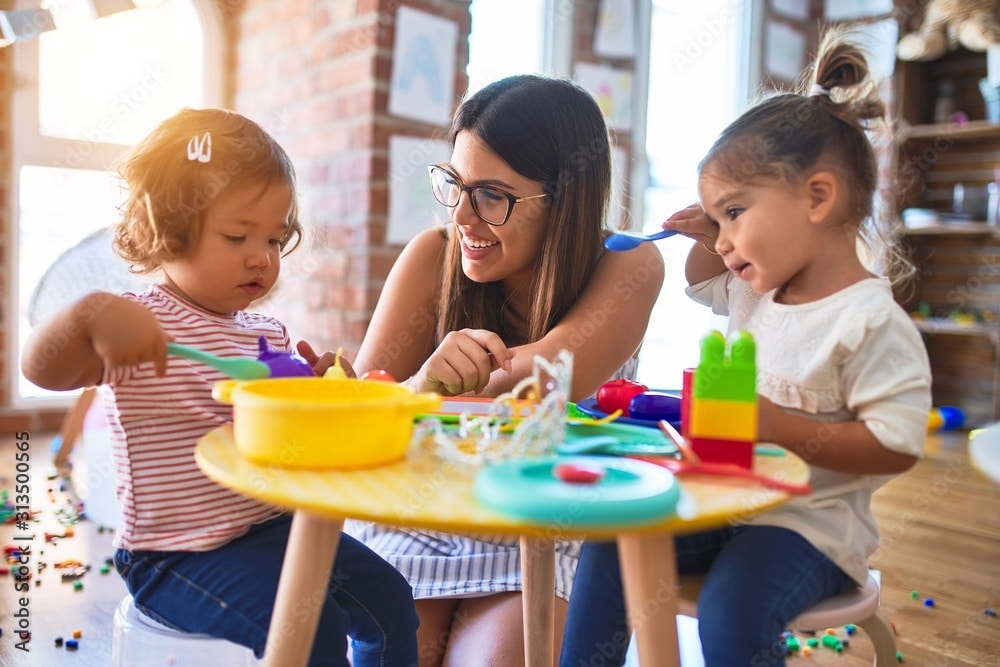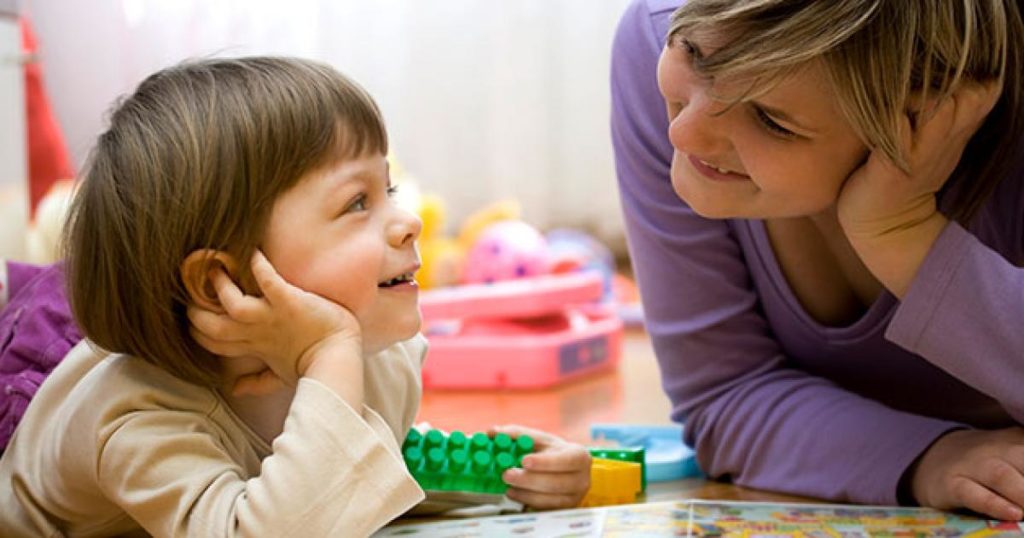Promoting Sense of Self
Experiences and relationships with our families, cultures, communities, schools and other settings shape our identities over time. During early childhood, children develop self-concepts or sense of self as they recognize and understand who they are – what makes them similar to and different from other people. They notice the characteristics – attributes, abilities, attitudes, and values that define them as unique individuals.
Sense of Self, or identity, includes roles, behaviors, and attributes we associate with ourselves including descriptions, such as “I’m Strong,” Development of sense of self begins in infancy. A child’s sense of self is about who he is, not what he can do. Truly knowing and understanding the children in your setting requires observation, time, and commitment. This knowledge allows you to customize the environment, materials, curriculum, and interactions with individuals and groups to best serve each child.

Here are a few ways to support children’s development of self-concept and strengthen relationships with each child:
- Respond to children’s needs promptly and consistently. They build a sense of trust if they know their needs are being met.
- Include families in the setting. Post photos of children and families in the classroom
- Incorporate children’s language and cultures within the classroom
- Create a home-like environment within the classroom.
- Post documentation of children’s learning.
- Encourage children to practice and master age-appropriate skills
- Provide many opportunities to make choices and express preferences. Give each child one on one positive attention every day
- Help children develop the ability to express emotions.
- Help children distinguish themselves from others.
Gender
- Around two children start to form ideas on gender.
- By three children usually know if they are a boy or a girl.
- Children are starting to categorize people
- They learn about gender by observing others behaviors, absorbing social norms, and processing media and environmental messages.
- Gender at this age is more about behavior than anatomy.
Temperment
Temperament is the way a person approaches and reacts to the world. It influences our behavior and the way we interact with others. It’s fixed at birth and driven by both nature and nurture.
Researchers define temperament into three types each of which is equally acceptable:
- Easy or flexible
- Active or feisty
- Slow to warm up or cautious
Of course, early educators need to be accepting while encouraging the child to step out of their comfort zone. It’s important to view all temperaments as equally worthy and appropriate Being aware of a child’s temperament can increase your understanding of their unique characteristics and how they will likely react to the people and events in their life
•Flexible Temperaments
- Check in regularly
- Help the child notice and understand their emotions
- Help them understand thy are free to ask for help
•Active or Feisty
- Be extra flexible and patient
- Anticipate strong emotions and responses
- Offer choices and opportunities for active play
- Individual reminders before transitions
- Label the strong emotions and describe them to the child
•Slow to Warm Up or Cautious
- Prepare the child for changes
- Ensure predictability in routines, schedules, and activities
- Anticipate extra support may be needed throughout the day

Approaches to Learning
As children gain knowledge and skills across the physical, cognitive, language, and social-emotional domains, children develop approaches to learning or specific skills that help direct their learning. There are specific characteristics that determine a child’s approach to learning Intrinsic motivation to learn
- Interest and joy in learning
- Engagement
- Persistence
- Planning
- Ability to focus and control attention
- Flexible problem solving
- Inventiveness
- Tolerance for frustration
Approaches to learning are closely linked to school readiness. Children who can plan, focus, and remain persistent, curious, and engaged tend to be more successful in school Marilou Hyson suggest the following strategies to arrange an effective setting
- Create an effective environment
- Welcoming to Children and Families
- Clear cues about what to do in each area
- Provide spaces for individual, lively, and physical activities
- All children to choose materials, activities, and friends supporting self-regulation
- Establish clear predictable routines and flexible schedules that provide enough time for children to get fully engaged in activities
- Organize children in small groups to allow for individualized teaching, interactions, and discussions
.Use intentional teaching practices like:
- Model positive approaches to learning
- Emphasize learning goals and mastery
- Encourage children’s curiosity and interest in doing an activity
- Provide opportunities to learn specific skills such as using a spoon or cutting with scissors. Respond to children’s ideas and actions
- Elaborate and join in with children’s play exploration
- Scaffold by providing assistance when needed and then withdrawing when appropriate.
- Offer meaningful challenging choices
- Plan alternative self-expression opportunities Encourage children to plan how they will use their time

Strengths and Challenges
●Every child will excel at something and struggle to master others. It’s ok. Understanding children’s strengths and challenges will help you customize activities to work on specific skills, encourage children to learn, and promote their success.
Children will typically excel sharply in one or two areas that may represent how they learn best. To maintain engagement, challenge them in the areas in which they excel and the areas in which they struggle.
Approximately 8% of three- to five-year-olds receive free special education services through the school system through The Individuals with Disabilities Act or IDEA. From birth to age three children are eligible for free assessment and evaluation and are provided an IFSP or Individualized Family Service Plan. The plan is developed with a focus on families as the greatest resource for infants and toddlers.
Preschoolers who are eligible for special education services are provided an individualized education plan or known as an IEP. The IEP is developed by educational staff in conjunction with parents and work on specified goals for the child and the services that might be needed. The services typically are speech, occupational and physical therapy
Cultural and Racial Identity
Early childhood classrooms are becoming more diverse, with every classroom including children who have many different cultural and ethnic identities, It’s an early educator’s job to ensure that their setting welcomes all children and families so they will feel comfortable and in the children’s case ready to learn.
Culture refers to the way you eat, sleep, talk, pray, play, and value things and concepts. Culture includes outward symbols like the way we dress or eat or the languages that we speak and a deep behavioral structure. Cultural rules dictate the way show respect, what constitutes as spirituality, Or concepts of time and personal space. Our values and goals of education and in essence the kinds of people we want our children to become.
We can help develop positive and accurate identities by showing that their family’s home language, cultural beliefs and practices, and racial background are welcomed and a natural part of the setting. Here are some ways to support children within the classroom:
- Pronounce names correctly and ask just to make sure
- Represent all of the children’s home language and cultures. Include books, signs, labels, toys, music, food, and other items throughout.
- Learn the rules, traditions, and expectations of all the families in your setting. Use this to develop meaningful relationships and support each culture within the classroom.
- Determine whether there are any developmentally appropriate practices that conflict with family’s cultural beliefs. Meet with families to discuss.
You can not do anything or compromise on anything that will negatively impact children’s health and safety, it is important to show respect and consideration for practices that a given culture might value like:
- Modeling tasks rather than allowing children to do things independently
- Valuing interdependence and finding it impolite to acknowledge one child rather than the group
- Deeming eye contact between children and adults while speaking as disrespectful
- Viewing boys serving their own meals or girls playing with trucks as disrespectful or inappropriate
- Celebrating or not celebrating certain holidays or birthdays
Racial Idenity
Young children do not understand the concept of ethnicity and racial groups, they notice differences among people. It’s important to note that racial identity can include multiple races and cultures. Children who are biracial and multiracial should have all their races represented if you are aware of them. We need to portray the message that ALL PEOPLE ARE EQUAL. Your job is to teach tolerance and acceptance of people of different races, cultures, and ethnicities and ensure that our children see that others are the same, but different in their own ways and that it is ok.
